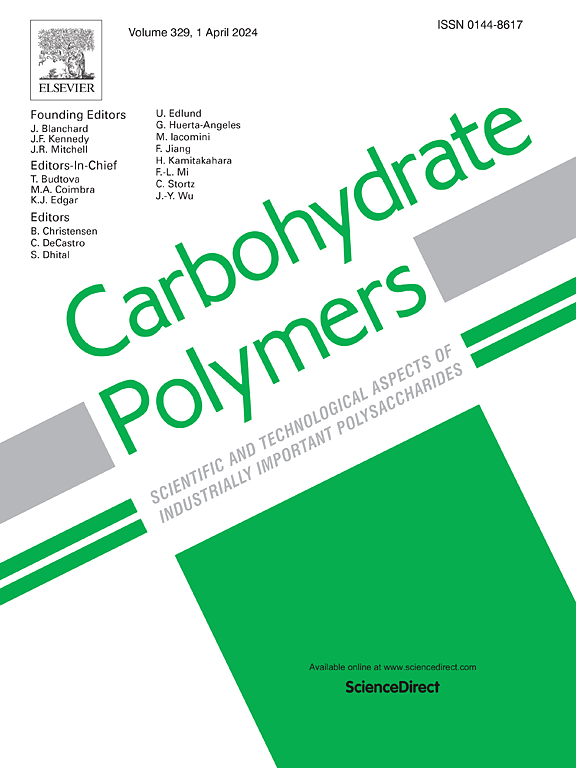Innovative ag-AgCl@TiO2@cellulose nanofiber porous composites with Z-scheme heterojunction for enhanced adsorption and photocatalytic degradation of formaldehyde
IF 12.5
1区 化学
Q1 CHEMISTRY, APPLIED
引用次数: 0
Abstract
Photocatalysis has emerged as one of the most promising technologies for formaldehyde purification owing to its green, safe, and cost-effective properties. However, most photocatalysts exhibit poor light absorption properties and exist as powders, limiting their large-scale application. To address this challenge, Ag-AgCl@TiO2@cellulose nanofiber porous composites were prepared by integrating the photocatalysts into a cellulose matrix through physical/chemical dual crosslinking, photoreduction, and freeze-drying. The materials exhibited excellent mechanical properties due to the hydrogen bonding and electrostatic adsorption interactions between the components. Moreover, the porous composites exhibited excellent synergistic adsorption–photocatalytic degradation performance for formaldehyde. This is attributed to the abundant polar functional groups in the cellulose nanofibers and the heterostructure formed by TiO2, Ag, and AgCl. The composites achieved a maximum photocatalytic degradation rate of 99.54 %. After five cycles of reuse, they still maintained a high degradation efficiency of 99.07 %, demonstrating excellent recyclability. Compared with similar materials, the synthesized porous composites performed well in terms of degradation rate, maximum degradation efficiency, and cyclic reutilization performance. In summary, this study provides an innovative approach to air purification.

具有z型异质结的新型ag-AgCl@TiO2@纤维素纳米纤维多孔复合材料用于增强甲醛的吸附和光催化降解
光催化以其绿色、安全、经济的特点成为甲醛净化技术中最具发展前景的技术之一。然而,大多数光催化剂的光吸收性能较差,且以粉末形式存在,限制了它们的大规模应用。为了解决这一挑战,通过物理/化学双交联、光还原和冷冻干燥,将光催化剂整合到纤维素基质中,制备了Ag-AgCl@TiO2@纤维素纳米纤维多孔复合材料。由于组分之间的氢键和静电吸附相互作用,材料表现出优异的力学性能。此外,多孔复合材料对甲醛具有良好的协同吸附-光催化降解性能。这是由于纤维素纳米纤维中丰富的极性官能团以及TiO2、Ag和AgCl形成的异质结构。复合材料的最大光催化降解率为99.54%。经过5次循环再利用,仍保持99.07%的高降解效率,表现出优异的可回收性。与同类材料相比,所合成的多孔复合材料在降解速率、最大降解效率和循环再利用性能方面均表现优异。总之,这项研究提供了一种创新的空气净化方法。
本文章由计算机程序翻译,如有差异,请以英文原文为准。
求助全文
约1分钟内获得全文
求助全文
来源期刊

Carbohydrate Polymers
化学-高分子科学
CiteScore
22.40
自引率
8.00%
发文量
1286
审稿时长
47 days
期刊介绍:
Carbohydrate Polymers stands as a prominent journal in the glycoscience field, dedicated to exploring and harnessing the potential of polysaccharides with applications spanning bioenergy, bioplastics, biomaterials, biorefining, chemistry, drug delivery, food, health, nanotechnology, packaging, paper, pharmaceuticals, medicine, oil recovery, textiles, tissue engineering, wood, and various aspects of glycoscience.
The journal emphasizes the central role of well-characterized carbohydrate polymers, highlighting their significance as the primary focus rather than a peripheral topic. Each paper must prominently feature at least one named carbohydrate polymer, evident in both citation and title, with a commitment to innovative research that advances scientific knowledge.
 求助内容:
求助内容: 应助结果提醒方式:
应助结果提醒方式:


